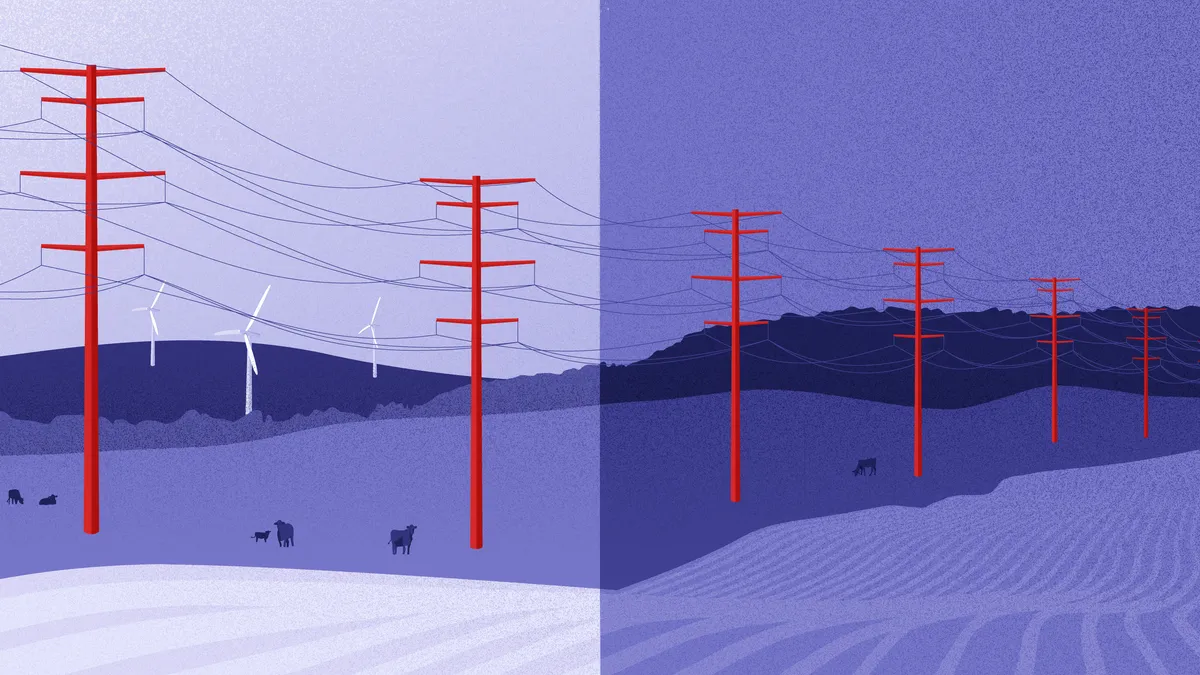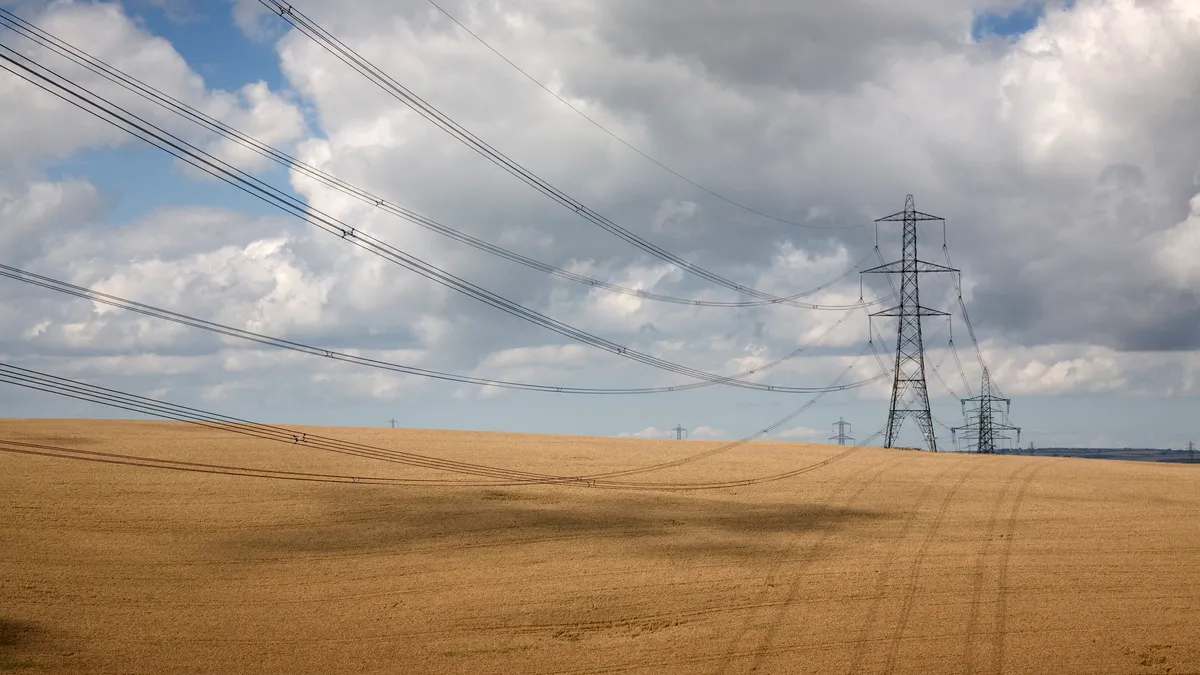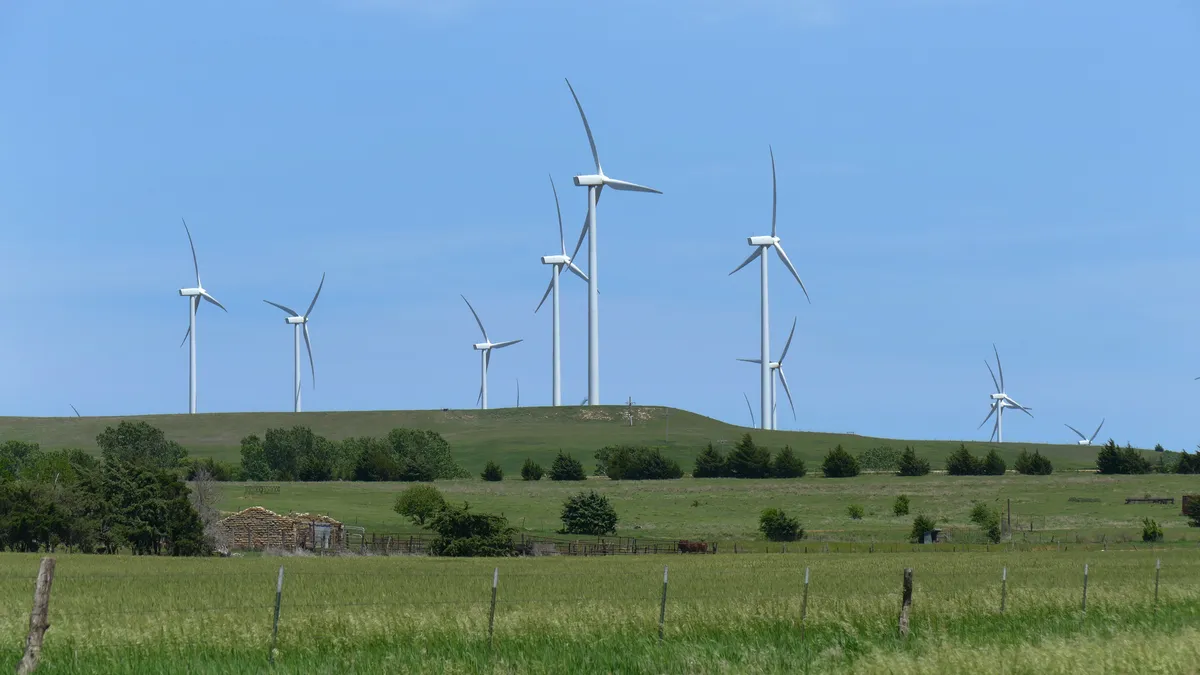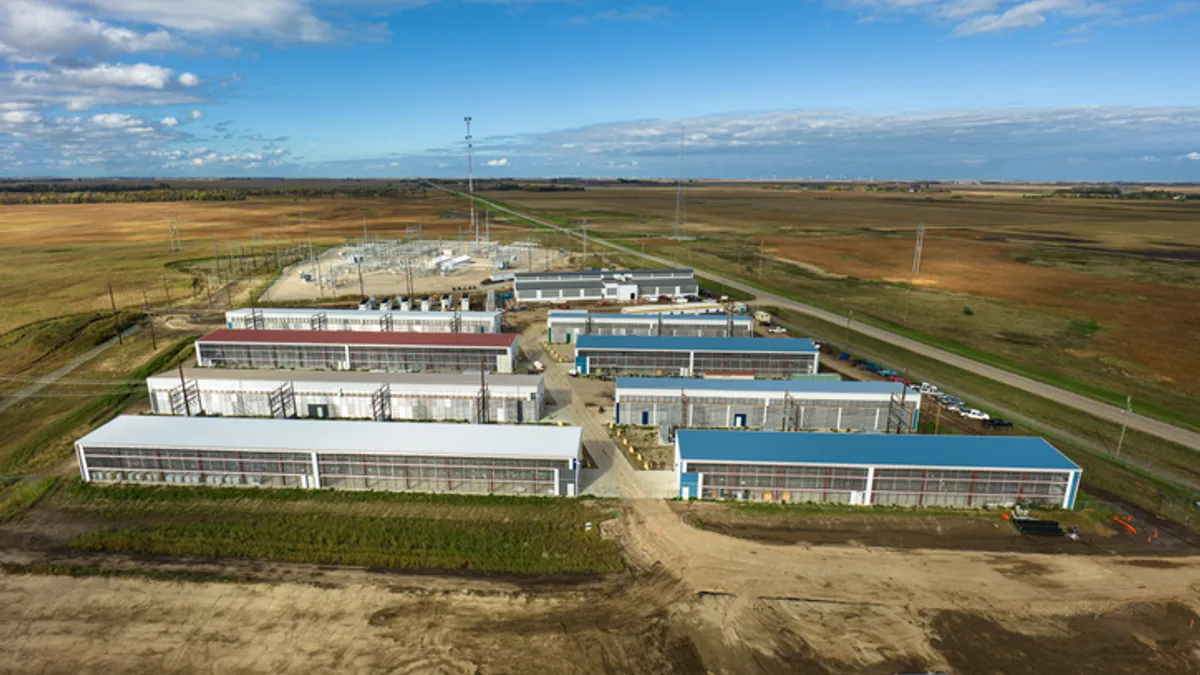UPDATE: Sept. 30, 2019: The Wisconsin PSC voted unanimously Sept. 26 to authorize construction of the Cardinal-Hickory Creek transmission project.
An increasing number of cities, states and companies are pursuing clean energy targets, while improving economics and technologies are expanding the supply of zero-carbon options. But what's the best way to achieve those goals?
In the Midwest, a proposed $492–543 million transmission project is raising big questions about renewables, reliability and the evolving American grid. Advocates say the high-voltage line is needed to expand access to wind energy and ensure reliability, while opponents say it is unnecessary and worse than a suite of alternatives that could include solar, demand response and other advanced transmission technologies.
The Cardinal-Hickory Creek transmission project would carry 345 kV more than 100 miles from near Dubuque, Iowa, to Middleton, Wisconsin, a suburb of Madison. It is the last of 17 multi-value transmission projects proposed by the Midcontinent Independent System Operator (MISO) in 2011 with the goal of improving reliability, efficiency and access to renewable energy based on forecasted capacity additions.
"A major driver for the Cardinal-Hickory Creek Transmission Line Project is responding to the changing energy landscape, as hundreds of MW of traditional plants come offline and new sources of generation — notably renewable sources in wind-rich areas — need access to the grid."

Alissa Braatz
Spokesperson, ATC
Costs would be shared by multiple states in the MISO service area, with about $66–72 million falling to Wisconsin ratepayers. The project developers are the American Transmission Company (ATC), ITC Transmission and Dairyland Power Cooperative.
A pending decision by the Wisconsin Public Service Commission is among the last major hurdles for the project: the Iowa Utilities Board is expected to rule in December 2019, and federal agencies including the Department of Agriculture's Rural Utilities Service, the U.S. Fish & Wildlife Service and the U.S. Army Corps of Engineers will make their own regulatory determinations about the project in 2020, according to ATC.
"A major driver for the Cardinal-Hickory Creek Transmission Line Project is responding to the changing energy landscape, as hundreds of MW of traditional plants come offline and new sources of generation — notably renewable sources in wind-rich areas — need access to the grid," Alissa Braatz, a spokesperson for ATC and the other project developers, told Utility Dive via email.
Braatz said the project will also deliver reliability benefits to Midwestern communities by improving the stability of the regional transmission grid and helping offset the need to upgrade lower voltage lines. However, the Cardinal-Hickory Creek project has divided environmental and clean energy groups, who are at odds over whether it is an effective step toward clean energy goals that balances ratepayer concerns and environmental impacts.
Clean energy advocates say transmission is necessary for wind access
A coalition of mostly renewable energy interest groups, including the Clean Grid Alliance, RENEW Wisconsin, Fresh Energy, the Minnesota Center for Environmental Advocacy and the Center for Rural Affairs have endorsed the project.
More than 4 GW of new renewable capacity will rely on the line to deliver their full output, according to the Clean Grid Alliance (CGA). Without Cardinal-Hickory Creek, CGA says, MISO could curtail the energy output of these facilities.
And 21 GW of mostly renewable capacity with interconnection requests under active study by MISO could also be negatively impacted if the line is not completed as planned, according to Public Service Commission testimony filed by MISO economic studies manager Matthew Ellis. CGA argues that in the context of MISO and the Upper Midwest, the line addresses a real need to bring major wind capacity additions in the Great Plains to markets farther east.
"The need [for the line] is still valid. That's not to diminish the growth of distributed generation or non-transmission alternatives. Those do serve a useful purpose," said Sean Brady, a senior counsel and regional policy manager for CGA. "But in this situation, they're not as effective in delivering the large volume of generation effectively and reliably as we've seen being built in Iowa, Minnesota and [the Dakotas]."
Bringing western wind to market
Ellis's testimony explains that MISO planned the project in part with the goal of bringing renewable capacity from western states with high-quality wind resources to load centers further east, helping MISO states meet their renewable goals.
"The renewable energy mandates and system flows that drove the initial project justification for the CHC Project remain valid drivers, and a strong west-to-east regional flow continues to drive the need for an additional 345 kV path across Wisconsin," Ellis wrote.
Wind accounts for a much larger proportion of the generation mix in Iowa (34%, 8,422 MW of capacity) than it does in Wisconsin (3%, 737 MW of capacity). State policy has also been less favorable to wind in Wisconsin, and local opposition to some projects has been strong, despite a higher RPS target in Wisconsin (10% by 2015, with out of state generation counting if sold to Wisconsin consumers) than in Iowa (105 MW).
Though Wisconsin's statewide target has been met, utilities have much more ambitious goals, including several with 100% by 2050 targets.
"There is no doubt that increasing [transmission] capacity in this region will benefit consumers, increase reliability, and reduce emissions."

Rob Gramlich
Founder and President, Grid Strategies
Wisconsin Electric Power (WEP), Xcel subsidiary Northern States Power (NSP), and Madison Gas & Electric (MGE), have ambitious goals to reduce their carbon emissions by 80% (WEP) or be 100% carbon free or neutral (NSP, MGE) by 2050. These companies need to add renewable capacity in order to meet their goals, and Cardinal-Hickory Creek is fundamental to making those goals feasible, according to testimony by RENEW Wisconsin's policy director, Michael Vickerman.
Wisconsin's electricity prices are also among the highest in the Midwest, and advocates say the project will help reduce costs for ratepayers over the long term.
But Brady emphasized that the project is important not just in the context of Wisconsin, which has limited local generation capacity and access to renewables compared to its western neighbors, but also MISO as a whole. As forecasted wind capacity additions are built and even exceeded, lines are needed to cost-effectively and reliably deliver their output across the region, he said.
"There is no doubt that increasing [transmission] capacity in this region will benefit consumers, increase reliability, and reduce emissions. The MISO [multi-value project] package of lines, of which this line is a part, are one of the country's best examples of proactive transmission planning to address grid capacity challenges," Rob Gramlich, founder and president of Grid Strategies, Inc., a consulting and advocacy firm that helps clients integrate clean energy with the grid, told Utility Dive via email.
Gramlich's associate, Michael Goggin, filed testimony with the Wisconsin Public Service Commission on behalf of several renewable energy advocacy organizations. In his testimony, Goggin emphasized that the project would reduce costs for ratepayers by alleviating transmission congestion, which prevents low-cost electricity from reaching consumers. It would also drive prices down by increasing competition among generation suppliers offering capacity into the MISO market, along with providing reliability and avoided carbon dioxide benefits.
"Wind resources have no fuel costs, so they offer into MISO's wholesale electricity markets as one of the lowest marginal cost generators. As such, they will always be one of the first forms of generation dispatched by the grid operator, thereby displacing units with higher marginal operating costs," Goggin testified.
Without the line, according to a fact sheet released by the Clean Grid Alliance, the region will remain "overly dependent" on fossil fuels in spite of an abundance of cheap, clean electricity in Iowa, Minnesota and the Dakotas.
Environmental groups, former FERC chairman skeptical
But not everyone is convinced of the project's merits.
Despite its purported advantages, the project would require building dozens of towers through the rolling "driftless" landscape of southwestern Wisconsin, a scenic matrix of forest and agriculture with unique cultural and geological features, according to Curt Meine, an academic and non-profit leader who is an authority on the region and also filed testimony with the Public Service Commission.
This, the project's high price tag, and doubts about the need for more capacity and improved reliability in Wisconsin have convinced local land and wildlife conservation advocates that the project is not in the public interest.
"We're a little dubious about the prospects of a single 345-kV line somehow unleashing the power of wind energy from out west," David Clutter, executive director of the Driftless Area Land Conservancy (DALC), told Utility Dive. Clutter wants to see a cleaner grid, but he notes that due to the generation mix in the Upper Midwest, a significant amount of fossil generation will also likely be carried by the fuel-neutral line.
"Anybody who's familiar with this process has found the [amount, number, breadth, and diversity] of the public opposition in this particular case stunning and remarkable."

Howard Learner
Executive Director, Environmental Law & Policy Center in Chicago
"Essentially, our argument is, instead of building this line and sort of wishing that economic powers will turn around and provide more access to wind energy, we really do feel that alternative transmission solutions are a better, cheaper way of getting 100% renewable," Clutter said.
DALC and another group, the Wisconsin Wildlife Federation (WWF), are being represented by the Environmental Law & Policy Center (ELPC) as they oppose the line. These organizations have been among the most outspoken of 18 groups and local governments and 27 individuals participating in the Public Service Commission (PSC) proceedings, according to the Wisconsin State Journal.
Elected officials from both parties, including U.S. Senator Tammy Baldwin, D-Wis., and several Republican state senators and representatives have asked the PSC to carefully evaluate the need for the line and potential alternatives. In an unusual move, the attorneys general from two neighboring states, Illinois and Michigan, have also filed a brief with the PSC against the line.
"Anybody who's familiar with this process has found the [amount, number, breadth, and diversity] of the public opposition in this particular case stunning and remarkable," Howard Learner, executive director of the Environmental Law & Policy Center in Chicago and one of the attorneys representing DALC and WWF, told Utility Dive.
Expert testimony has also been submitted to the PSC by former FERC chairman Jon Wellinghoff. The testimonies of Wellinghoff and other experts representing DALC and WWF turn in part on the question of whether the project's renewable capacity and reliability goals can be met through alternative means, which they say the project developers have not evaluated thoroughly.
"There is no reliability threat to Wisconsin if the Commission denies the Application and orders the Applicants to rerun their models using updated assumptions and develop an alternative transmission solution."

Rao Konidena
President, Rakon Energy
"There is not sufficient evidence of record for this Commission to definitively conclude that the Cardinal-Hickory Creek (CHC) transmission line project is the highest priority energy option that is also cost effective and technically feasible as required by Wisconsin law," Wellinghoff, now the CEO of Grid Policy, Inc., a distributed energy consulting group, wrote in his testimony to the Wisconsin Public Service Commission.
The suite of eligible alternatives could include utility-scale and distributed solar, storage, demand response and advanced transmission technologies such as flow control and dynamic line rating, according to testimony filed by Wellinghoff and other experts.
"The need for that particular 345 kV line is something that certainly will have to be determined by the Wisconsin Commission, but it was clear to us in reviewing the application and testimony by applicants that they did not do a comprehensive review of the alternatives," Wellinghoff told Utility Dive.
The intervenors in the Cardinal-Hickory Creek case have also questioned the need for added transmission to increase reliability.
"There is no reliability threat to Wisconsin if the Commission denies the Application and orders the Applicants to rerun their models using updated assumptions and develop an alternative transmission solution," Rao Konidena, president of Rakon Energy and a former MISO engineer and manager, testified.
The Cardinal-Hickory Creek debate in context
The heated debate over Cardinal-Hickory Creek illustrates both the pace of technological change and uncertainty in the era of distributed generation.
Stakeholders have different ideas about how to decarbonize the energy sector. In this case, MISO's high-level forecast of a rapidly expanding wind capacity market was borne out, but technological advances in other areas like distributed energy, demand response and flow control gave Cardinal-Hickory Creek opponents grounds to challenge the transmission proposal while still advocating for a clean grid.
"There's no question that [the project developers] used outdated numbers for costs of the [alternative transmission] technology. They used outdated assumptions with respect to capacities and capabilities of these technologies, and that in part, I think, factored into their rejection of them as viable alternatives," Wellinghoff told Utility Dive.
Other experts testifying on behalf of DALC and WWF have noted that 4.5 GW of solar capacity were under "active" study in the MISO queue for Wisconsin in March 2019 (the number has since risen to more than 6 GW). If constructed and connected, these projects could "free up" more transfer capacity on existing transmission lines in the state, according to testimony by Konidena.
Whether the line is built or not, it will be a few years before either the existing wind capacity in states west of Wisconsin or the solar under study in the state reaches consumers. If approved, the line is not expected to be operational until 2023 or later, and most of the proposed solar development projects have listed in service dates in the early 2020s, although none are later than 2022.
So far, there has been no indication from the commission as to the outcome, although in 2015 the commission did approve the Badger-Coulee line, a similar MISO MVP project (also developed by ATC) connecting central Wisconsin and Minnesota.
Wisconsin PSC Chairwoman Rebecca Cameron Valcq declined to comment on a case currently before the commission, and the other commissioners did not respond to requests for comment.
The PSC needs to make a decision before September 30, or the project will be automatically approved due to a Wisconsin law which places a cap on the number of days that projects are eligible for review.






















